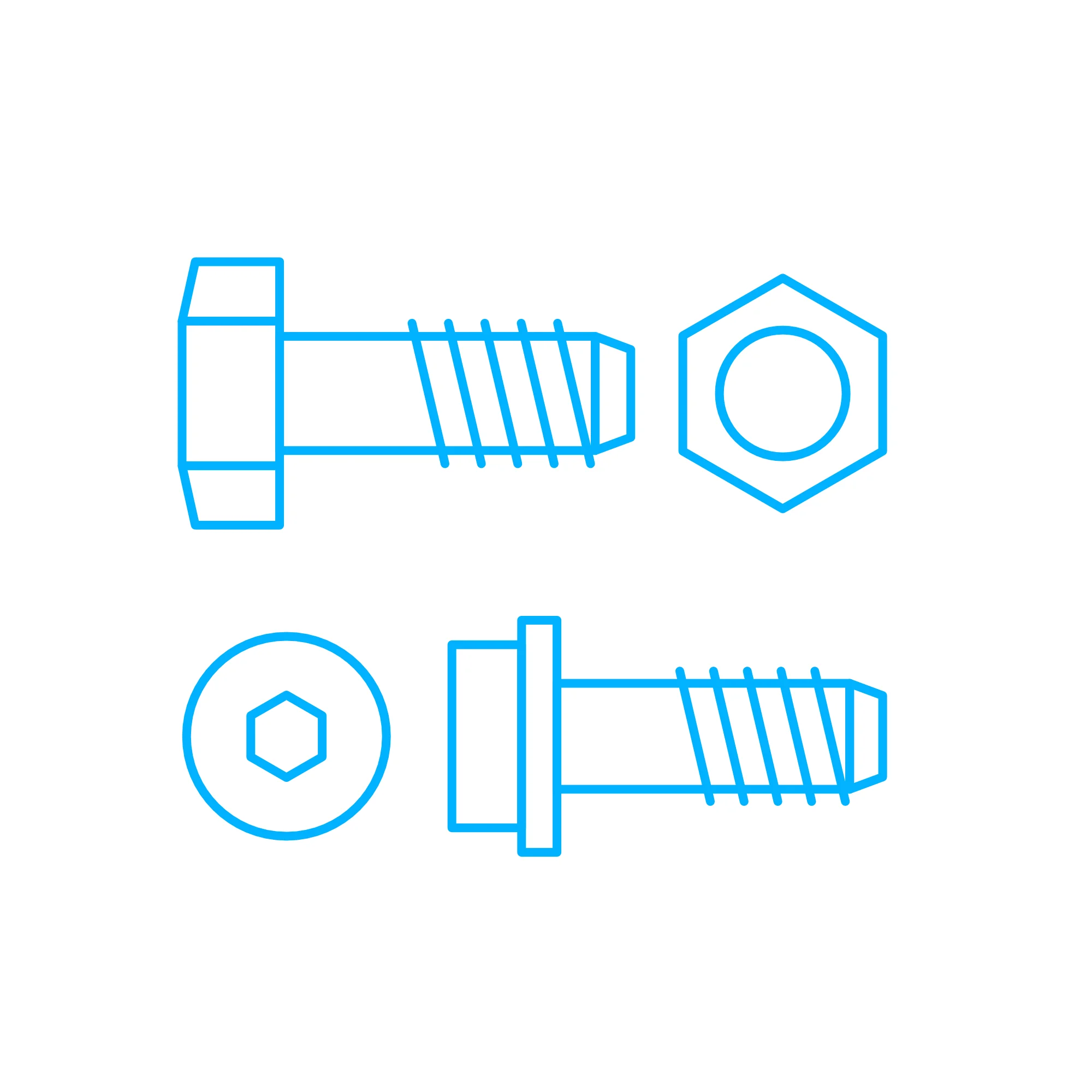VENT PLUG Screws for Marine, Diesel and Gas Engines
Screws are precision-engineered fasteners that create the clamping force required to hold engine components in exact alignment under extreme thermal, mechanical, and vibrational loads. In combustion engines—whether marine engines, diesel engines, or gas engines—screws secure cylinder heads, main bearing caps, connecting rods, turbochargers, pumps, covers, and ancillary systems. Their role is not limited to simple fixation: correctly specified and installed screws deliver predictable preload, seal pressure boundaries, and maintain geometry, which directly impacts performance, efficiency, emissions, and safety.
Within this broad category, threaded plugs—often referred to in practice alongside terms like VENT PLUG for marine engine or diesel engine applications—serve as specialized screw-type components for bleeding, venting, or sealing passages. Both structural screws and venting plugs depend on tight tolerance threads, surface finishes, and material strength to perform reliably in harsh operating environments.
VENT PLUG context: how Screws create preload and stability in an engine
The primary technical function of screws in an engine is to generate and maintain preload. When a screw is torqued, it elongates elastically, clamping parts together with a defined force. This preload keeps joint interfaces closed during dynamic loading, ensuring gaskets seal and critical alignments remain intact. High-strength classes (e.g., 8.8, 10.9, 12.9) and temperature-capable materials are specified so that the clamping force remains within the elastic range—even during thermal cycles and vibration typical of a marine engine or heavy-duty diesel engine.
For example, cylinder head screws distribute uniform compression on the head gasket to prevent combustion gas leakage and coolant-oil cross-contamination. Connecting rod and main bearing cap screws secure rotating assemblies at high RPM, resisting fatigue. Exhaust manifold and turbocharger screws manage thermal expansion while maintaining sealing integrity. In parallel, a VENT PLUG for diesel engine cooling circuits or lube oil galleries provides a controlled way to purge air, relying on thread integrity and sealing geometry comparable to screw joints elsewhere in the engine. When sourced as VENT PLUG OEM parts, thread class, seat design, and material compatibility align with the engine maker’s specifications to avoid weeping, galling, or pressure loss.
Correct torque-tightening methods—torque-angle, yield tightening, or elongation measurement—translate to predictable preload. Surface conditions (coatings, lubrication), thread tolerances (e.g., metric 6g or UNF class), and locking features (prevailing torque nuts, micro-encapsulated patches, safety wire) are engineered to mitigate self-loosening under vibration and thermal cycling.
- · High tensile strength for stable preload under dynamic loads.
- · Corrosion-resistant coatings (e.g., zinc-nickel) suitable for marine environments.
- · Precision threads for repeatable torque-to-tension conversion.
- · Heat-resistant materials for exhaust and turbocharger zones.
- · Proven locking methods to prevent loosening and leaks.
- · Batch traceability and consistent metallurgy for reliability.
- · Sealing geometry that supports VENT PLUG and plug-screw applications.
Why Screws matter for reliability, uptime, and service life
Engine reliability depends heavily on the integrity of screw joints. Loss of preload can lead to gasket failure, hot gas leakage, misalignment of housings, shaft runout, vibration amplification, and accelerated wear. In extreme cases—such as a failed connecting rod screw—catastrophic engine damage can occur. Corrosion, hydrogen embrittlement, galling, over-torqueing, and re-use beyond the design limit (especially for torque-to-yield screws) are common risk factors. In marine environments, salt-laden atmospheres demand coatings and materials that resist pitting and crevice corrosion; inadequate protection can reduce preload over time as corrosion products creep into the thread flanks.
Similarly, a leaking or improperly specified VENT PLUG in a marine engine can allow air pockets to persist in cooling or lubrication circuits, increasing cavitation risk, reducing heat transfer, and causing localized overheating or bearing distress. Keeping all screw-type fasteners—including venting plugs—in specification is essential for safety, efficiency, and predictable maintenance intervals.
Advantages of OEM spare parts suitable for Screws and VENT PLUG applications
Using OEM-grade screws ensures that material properties, heat treatment, and coatings match the engine’s design intent. This precision delivers consistent preload and fatigue life, which translates into stable performance and lower lifecycle costs. Dimensional conformity of thread forms and underhead geometries prevents fretting, micro-movement, and gasket crush variations. It also ensures torque specifications produce the intended clamping force without relying on excessive safety margins.
For VENT PLUG OEM parts, correct seat angles, sealing profiles, and materials are essential to achieve leak-free venting and re-sealing after service. Compatibility with engine block alloys, coolant or oil chemistry, and pressure ratings prevents galling and micro-leaks that can escalate into downtime.
VENT PLUG OEM parts and screw quality in marine engine and diesel engine service
OEM screws and VENT PLUG components are manufactured with controlled surface finishes and coatings that maintain friction coefficients within tight windows, enabling accurate torque-to-tension relationships. They are delivered with traceable batches, consistent hardness, and verified mechanical properties, supporting compliance and minimizing the risk of premature fatigue. The result is predictable assembly, reduced rework, and secure operation under load.
From a budget perspective, selecting OEM spare parts suitable for screws reduces the hidden costs of unplanned maintenance, repeat torquing, and accelerated gasket or component wear. Extended service life and fewer breakdowns protect operational schedules and reduce total cost of ownership across fleets.
MOPA: your partner for OEM screws and VENT PLUG needs
MOPA supports purchasers, shipowners, and technical decision-makers with OEM spare parts for screws across diesel and gas engines. We prioritize speed in quotation and delivery, consistent quality across critical fasteners, and security in the trade of OEM parts—so your assets return to service quickly and stay reliable. Whether you require high-strength cap screws, heat-resistant turbocharger screws, or a precisely matched VENT PLUG for a marine engine, MOPA provides technically correct solutions with documentation and traceability.
Conclusion
Screws are fundamental to engine integrity, from sealing and alignment to vibration control and safety. When paired with correctly specified VENT PLUG components and sourced as OEM spare parts suitable for screws, you gain stable performance, longer service life, and predictable maintenance. MOPA delivers the speed, quality, and security you need to keep diesel and gas engines operating at peak reliability.

